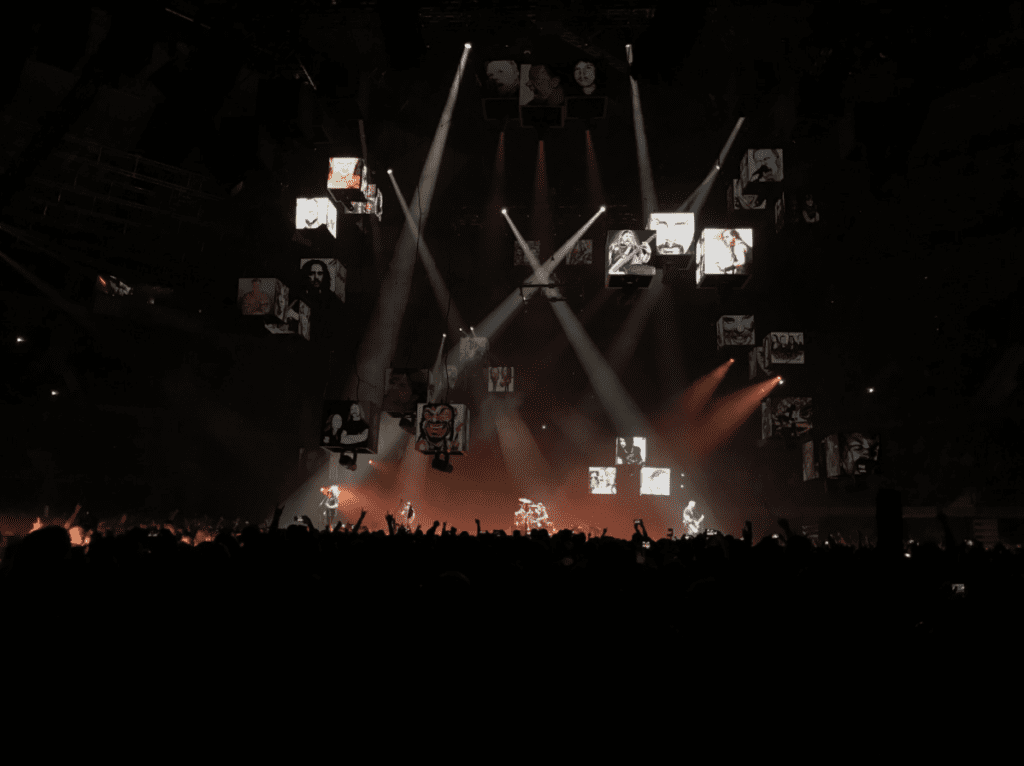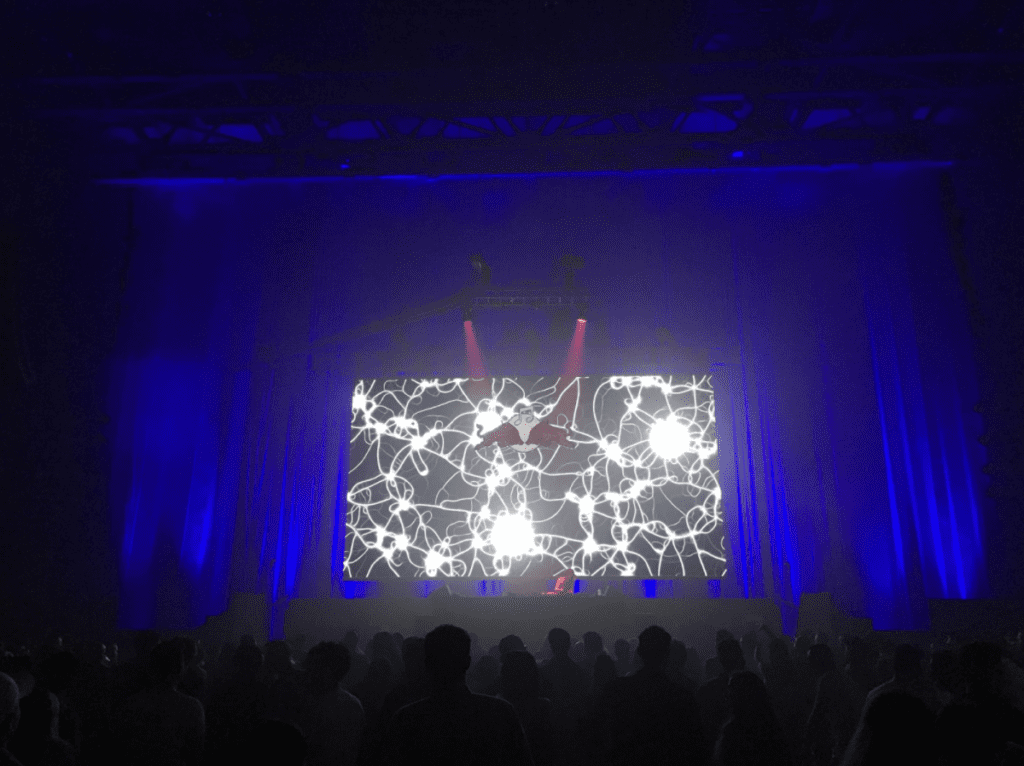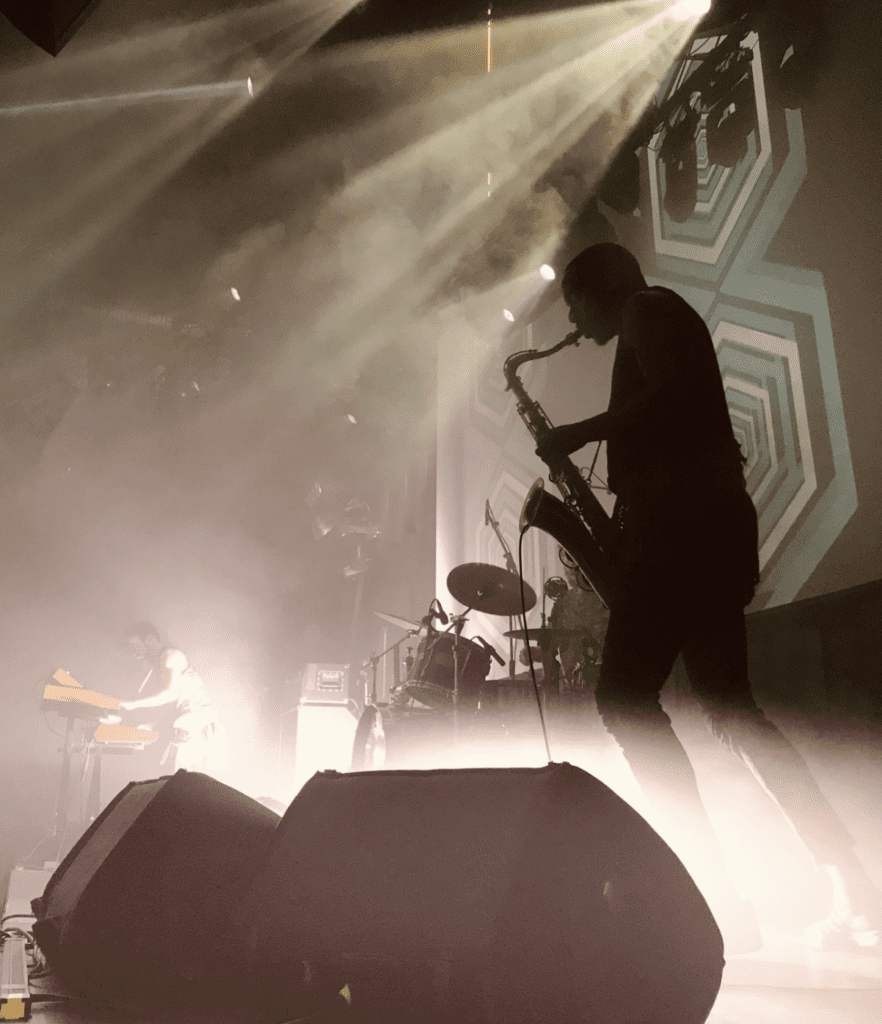By: Murat Önhon Crowds, queues, food trucks, merchandising stores, and all types of sounds are the first things that we notice when we enter a performance venue. Looking around the stage while waiting for the concert, we tend to think about how the artist will surprise us during their performance. Finally, the artist steps on to the stage and we start enjoying the music with the hit of the first note. But have you ever reflected about the elements that surround music in the venues hosting live events? Live performances, concerts, and musicals all have a huge production effort behind the scenes, and the details that we do not always think about shape the actual experience of an event. Since I started to work in the live entertainment business at Pozitif Music, some aspects of live performances catch my eye more than they used to. One of them is the use of visuals, which in fact is one of the most important factors in a live performance environment. Visuals have become the defining aspect of live experience and create the most unique moments by joining the sound. This can take the form of stage lighting, creative visual performances, or even the of use tangible elements such as wearables, fireworks and balloons, accompanying the sound and creating the ambiance. I wanted to take a closer look at some examples of the use of visuals in live music events, by emphasising on audiovisual (A/V) performances. Whether it consists of a live projection, animations, or pre-recorded visuals, A/V performances are occupying an important place in the schedule of the largest concerts and music festivals. Sonar, LEV, Timewarp and EXIT are a few examples of festivals that come to mind when talking about the interference of audio and visuals with progressing technology. Electronic music is the first genre to relate to the association of sounds with visuals, but is not the sole type of music that gets visual help during a live performance. Chemical Brothers, Max Cooper, Mohna, and Kiasmos are some of the top names in the field of A/V performance. Additionally, musicians belonging to other styles such as pop, rock, and hip-hop have also extended the use of digital visuals in their performances to amplify the magic of the moment for the audience.
A great example of the use of visuals in a live concert is Coldplay’s historical performance in São Paulo, 2018, within the “A Head Full of Dreams” tour. This tour’s concerts were characterised by the stage split up in three parts. The “A-stage” performance would be accompanied by laser light and pyrotechnic visuals. The most interesting detail transformed into a characteristic of this performance were the xylobands used as a main part of the visual show. These wristbands contain light emitting diodes and radio frequency receivers and can be controlled by a software sending signals to the wristband. Good way to set up—or fire up—the mood while the British band plays classics such as “Viva la Vida” or “Fix You”, with Chris Martin using the gigantic stage as a playground to amplify the echo of his angelic vocals.
Visual artists generally represent the music that they want to accompany with shapes, colors, waveforms, or other symbols associated to sounds. The sync to the music is the essential point to grab the audience’s attention. While some artists prefer to translate the musical process into a flow of symbols and graphic representations, others support the sound with an animation or cinematic that illustrates the story told by the track. Projection mapping is another practice used by visual artists to express their audio creations. Examples are emerging, of artists such as Refik Anadol, using buildings and architecturally outstanding sites for their projections. In live music, this type of visual effects and creations are not only projected on stage, around the performer’s space, but also in the whole venue depending on the site’s characteristics.

To understand further the working process and mindset of an A/V creator, Kerem Demirayak, artist and producer mostly known under the name of Karakter, guided me through his journey:
What is the most important aspect to catch the audience’s attention during an A/V performance? Are there any differences between what the performer and the listener notice in the performance?
I imagine the performance as a journey, instead of classic live shows where the song ends and there is an applause between every track, or there is constantly a bass and dance rhythm during DJ sets. I’m also trying to avoid standing behind a table, because it reminds me of a 9-5 job. These songs are personal and I really want the connection to be personal too. I believe the main added value of visuals is the creation of a world for the audience by placing the soundtrack into a setting.
How do you find a common point between visual and musical performances during your creation process?
The A/V performance mindset is really shifting my approach to production. I’m finding the inspiration from visual mood boards. I have ideas that are shaping for an album involving more characters. I’m willing to take my time before that mindset arrives. Also, I’m really trying to understand, produce and elevate other visual artists and their perceptions towards the performance, so that I can reflect the multi-disciplinary experience into the Karakter project.
What difficulties have you encountered during your creation process or performances?
When I moved to Valencia, Spain for my Master’s in music technology and innovation, I learnt about all the possibilities of electronic arts. Everything led up to this big final project where I performed an A/V live show with interactive technology. The original videos were all performed live. I actually manipulated the visuals content on stage to sync with the music. During the early prototype stages, there were a lot of mistakes and the hardest aspect was to track the signal flow. A tricky MIDI assignment system between two softwares can open a lot of doors, but you can get confused and trigger the wrong thing very easily.


It’s certain that technological progress gives increasing possibilities for artists to create original content by blending different disciplines, although it’s important to keep a balance between the natural authenticity of the musical performance and the visual spice added by what can sometimes be “extravagant” imagery. I hope this article helped you reminisce about the live experiences that we are all missing in the midst of the coronavirus context.







